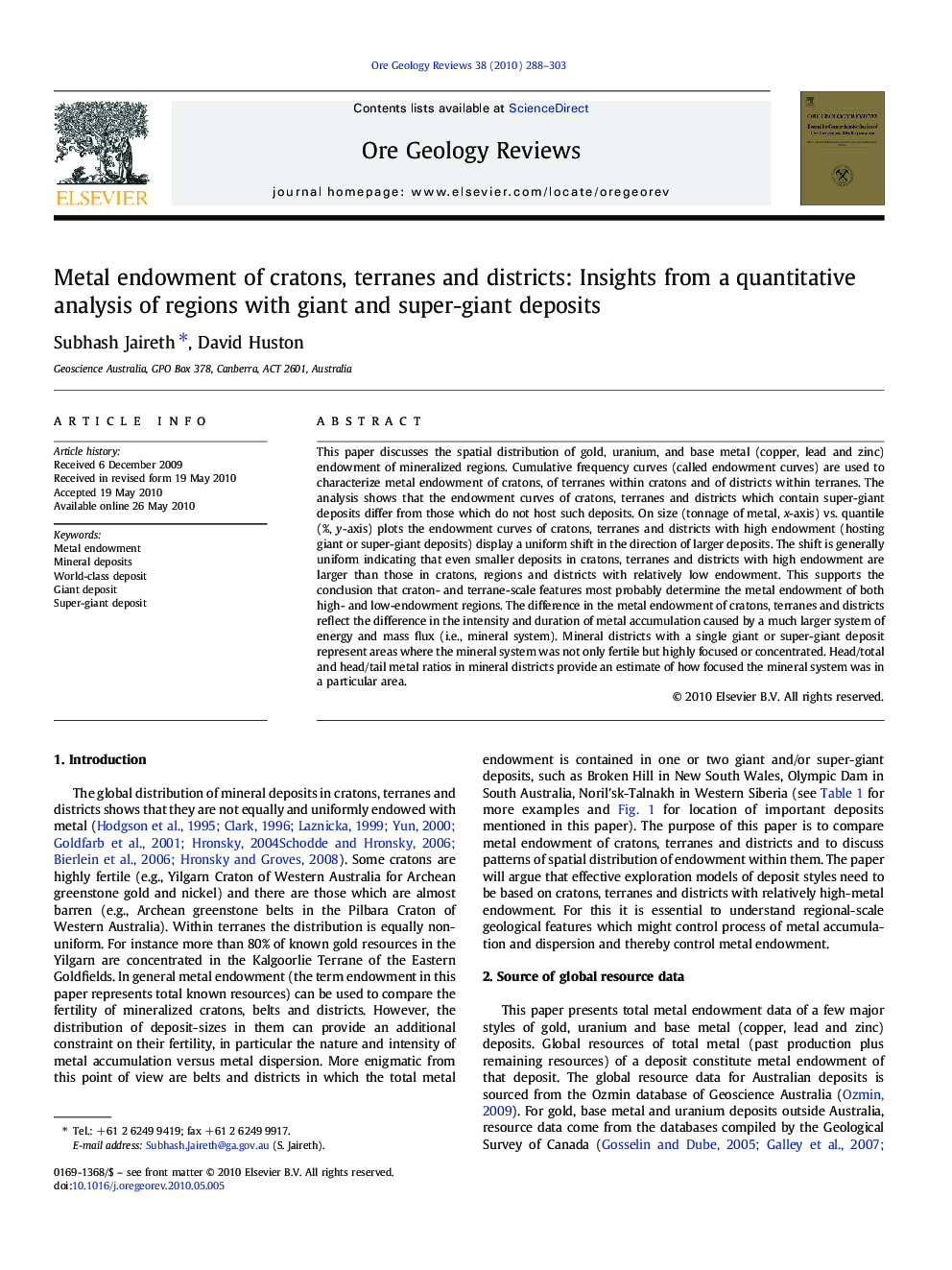| Article ID | Journal | Published Year | Pages | File Type |
|---|---|---|---|---|
| 4697742 | Ore Geology Reviews | 2010 | 16 Pages |
This paper discusses the spatial distribution of gold, uranium, and base metal (copper, lead and zinc) endowment of mineralized regions. Cumulative frequency curves (called endowment curves) are used to characterize metal endowment of cratons, of terranes within cratons and of districts within terranes. The analysis shows that the endowment curves of cratons, terranes and districts which contain super-giant deposits differ from those which do not host such deposits. On size (tonnage of metal, x-axis) vs. quantile (%, y-axis) plots the endowment curves of cratons, terranes and districts with high endowment (hosting giant or super-giant deposits) display a uniform shift in the direction of larger deposits. The shift is generally uniform indicating that even smaller deposits in cratons, terranes and districts with high endowment are larger than those in cratons, regions and districts with relatively low endowment. This supports the conclusion that craton- and terrane-scale features most probably determine the metal endowment of both high- and low-endowment regions. The difference in the metal endowment of cratons, terranes and districts reflect the difference in the intensity and duration of metal accumulation caused by a much larger system of energy and mass flux (i.e., mineral system). Mineral districts with a single giant or super-giant deposit represent areas where the mineral system was not only fertile but highly focused or concentrated. Head/total and head/tail metal ratios in mineral districts provide an estimate of how focused the mineral system was in a particular area.
